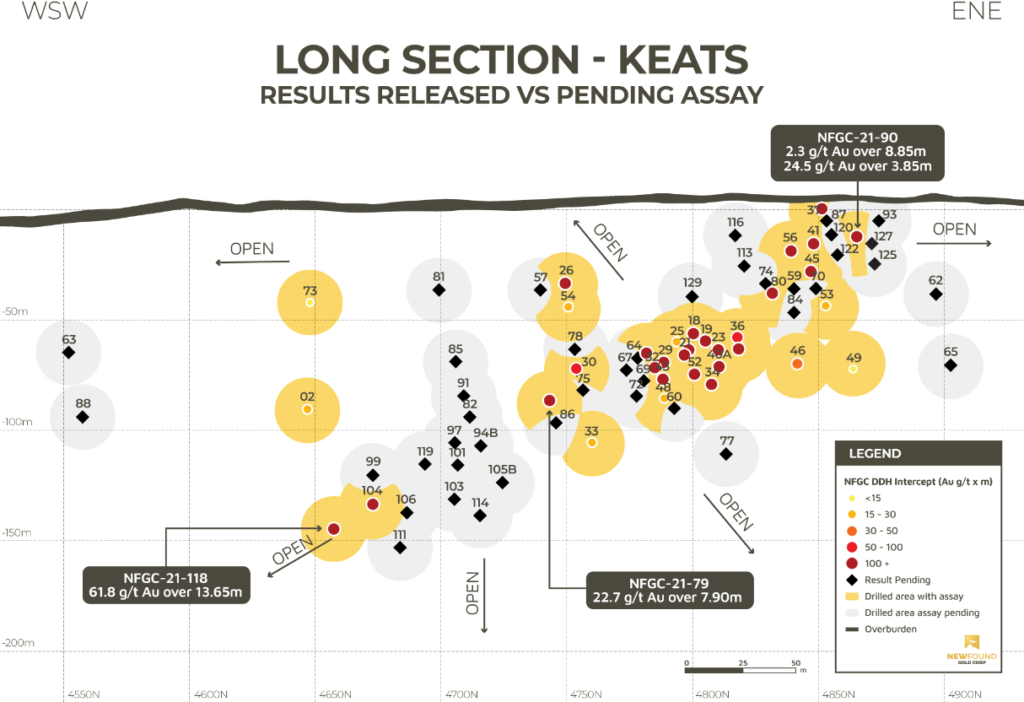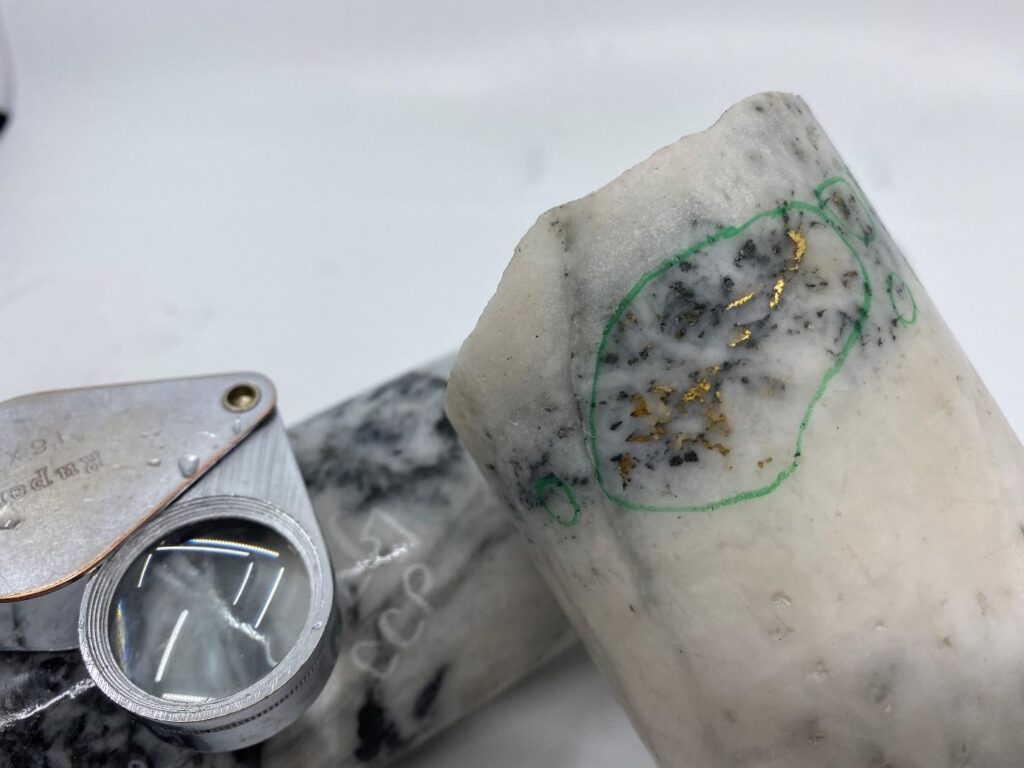New Found Gold (NFG.V): Keats Step-Out Returns 61.8 g/t Au over 13.7m, Extends High-Grade Zone to 285m Down-Plunge
Vancouver, BC, March 16, 2021: New Found Gold Corp. (“New Found” or the “Company”) (TSXV: NFG, OTC: NFGFF) is pleased to announce assay results from three holes drilled at Keats Zone (“Keats”). These holes were drilled as part of the Company’s ongoing 200,000m diamond drill program at its 100%-owned Queensway Project (“Queensway”), located on the Trans-Canada Highway 15 km west of Gander, Newfoundland. Highlights
- Highlights of these results include:

- The interval of 61.8 g/t Au over 13.7m in NFGC-21-118 is a 21m down-plunge step-out to the south from the previously furthest south intercept of 29.1 g/t Au over 11.4m in hole NFGC-21-104 (see NFG press release March 1, 2021) and is the deepest intercept drilled to date at Keats.
- Drill hole NFGC-21-118 is still being drilled and is targeted to intersect the Appleton Fault Zone. The hole is currently at a depth of 581m. Assay results from the balance of this hole will be reported when received.
- The interval of 24.5g/t Au over 3.85m in drill hole NFGC-21-90 is a 15m step-out to the north from the previously furthest north high-grade intercept. This interval is at approximately 25m vertical depth extending the high grade near surface mineralization in this area.
- The intercept of 22.7g/t Au over 7.9m in NFGC-21-79 further confirms the continuity of the high-grade envelope within the Keats-Baseline fault.
- The Keats high-grade zone has now been drill defined over 285m in the down-plunge direction. The zone remains open and step-out drilling is continuing to the south, vertically above and below this zone, and to the north.
Craig Roberts, P.Eng. CEO of New Found, stated: “Drilling at Keats continues to expand the impressive zone of high-grade gold mineralization. The interval of 61.8g/t Au over 13.7m is the furthest south and deepest drill intercept to date and indicates the continuation of a very strong gold mineralizing system capable of producing broad intervals of high-grade gold in this direction. Our excitement continues to grow with this success at Keats, further bolstered by our high-grade discovery at Lotto 2km to the north, and by other recent high-grade drill intercepts along the Appleton Fault Zone. We have recently managed to significantly shorten our turn around time on assays and this in combination with the ramp up to eight drills will significantly accelerate our volume of assay results and news flow. We look forward to reporting further results from Keats, Lotto, and our testing of +12 additional high-grade targets along +20km of the Appleton and JBP Fault Zones.”

Highlights – Previously Released Keats Main Zone Drill Intervals

Figure 1. Keats Main Zone Long Section

Figure 2. Keats Plan View

Figure 3. Visible gold mineralization in quartz associated with boulangerite and chalcopyrite in hole NFGC-21-118 at 212.5m depth
Drillhole Details
Table 2: Summary of results reported in this news release

Table 3: Location details of drill holes reported on in this news release

Sampling, Sub-sampling and Laboratory
True widths of the intercepts reported in this press release have yet to be determined but are estimated to be 70% to 80% of reported core lengths. Assays are uncut, and calculated intervals are reported over a minimum length of 2 meters using a lower cutoff of 1.0 g/t Au. All HQ split core assays reported were obtained by either complete sample metallic screen/fire assay or standard 30-gram fire-assaying with ICP finish at ALS Minerals in Vancouver, British Columbia or by entire sample screened metallic screen fire assay at Eastern Analytical in Springdale, Newfoundland. The complete sample metallic screen assay method is selected by the geologist when samples contain coarse gold or any samples displaying gold initial fire assay values greater than 1.0 g/t Au. Drill program design, Quality Assurance/Quality Control and interpretation of results is performed by qualified persons employing a Quality Assurance/Quality Control program consistent with National Instrument 43-101 and industry best practices. Standards and blanks are included with every 20 samples for Quality Assurance/Quality Control purposes by the Company as well as the lab. Approximately 5% of sample pulps are sent to secondary laboratories for check assays.



























